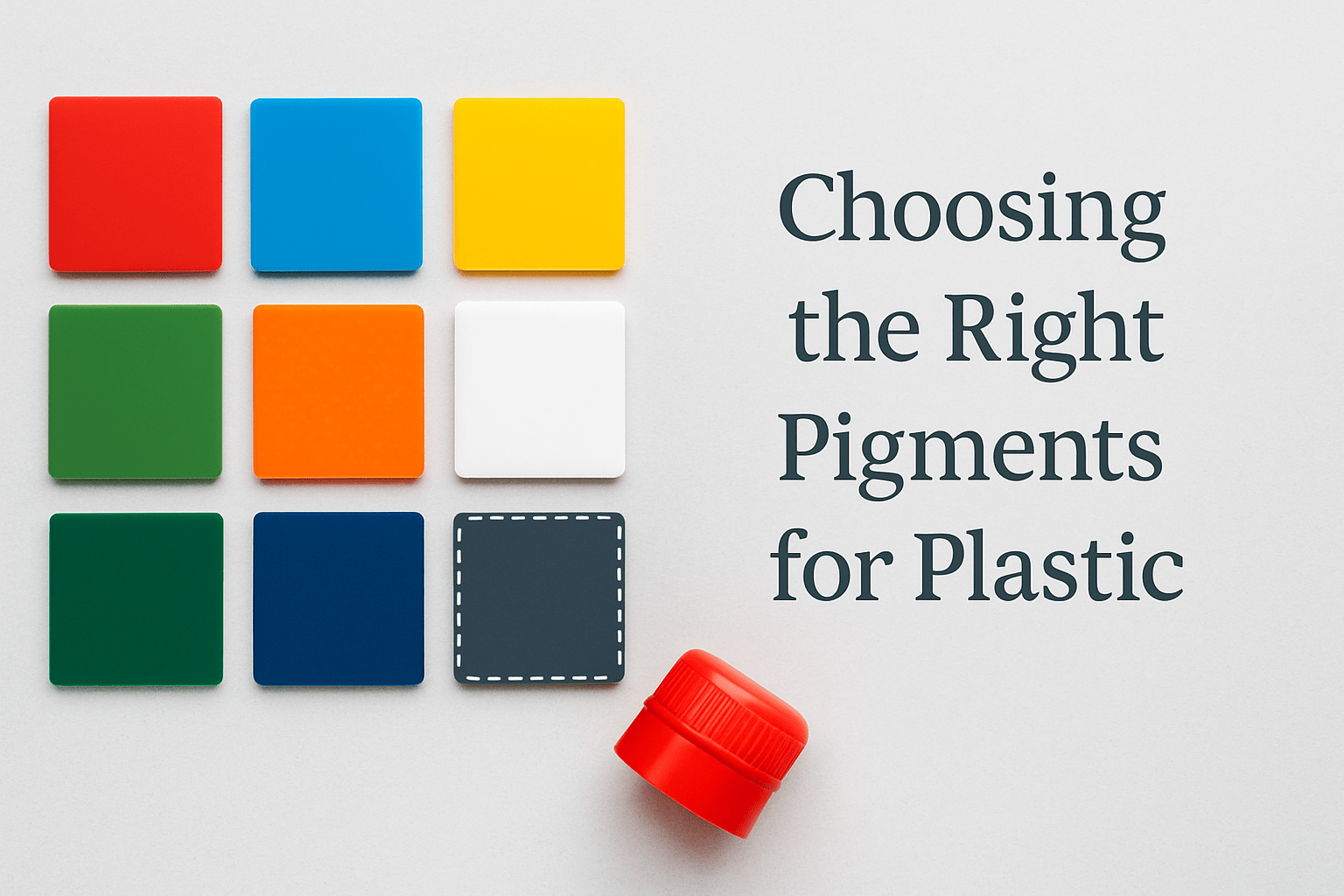If you’ve ever stood in a production line, watching a batch of plastic components come out slightly off-shade from the previous one — you know just how crucial it is to pick the right pigment. It’s not just about colour anymore. The right pigment for plastics directly affects consistency, durability, and sometimes even compliance.
Whether you’re in automotive, packaging, electronics, or consumer goods, selecting the right pigment plays a pivotal role in how your final product performs — and how it’s perceived by the customer.
Let’s walk through what really matters when choosing pigments for plastic applications.
Understand Your Resin System First.
Before you even think about colour, ask yourself: what polymer are you working with? Polypropylene (PP)? ABS? PET? HDPE?
Not all pigments behave the same way across different resins. For instance:
- Organic pigments may offer high colour strength and brightness but sometimes lack thermal stability.
- Inorganic pigments like iron oxides or titanium dioxide tend to be more stable but offer less vibrant shades.
When in doubt, always request compatibility tests or samples. A pigment might work beautifully in one polymer and degrade or discolour in another.
Heat Stability is Non-Negotiable
Pigments for plastics must survive processing temperatures. For example, injection molding typically operates at 200–300°C depending on the polymer. You’ll want pigments that don’t degrade, discolour, or release harmful volatiles at those temperatures.
Tip: If you’re working with engineering plastics like nylon or PBT, go for pigments with proven heat resistance above 280°C.
Think About the Final Application
This is where end-use functionality comes in. Ask yourself:
- Will the plastic be used outdoors?
- Will it be exposed to chemicals, UV light, or high temperatures?
- Is food contact approval necessary?
For outdoor applications like garden furniture or automotive trim, UV-resistant pigments are a must. In packaging for food or cosmetics, non-toxic and FDA-compliant pigments (or EU/FSSAI compliant if you’re exporting) are mandatory.
Opacity vs. Transparency
This is often overlooked. If you’re coloring translucent containers or films, your pigment choice will differ significantly from someone making opaque toys or pipes.
- Transparent colours require high-purity pigments with minimal filler or opacifying agents.
- Opaque applications often use titanium dioxide in combination with coloured pigments for better hiding power.
Cost vs. Performance
Let’s be real — budgets matter. But going for the cheapest pigment might cost you more in rejections, colour mismatches, or returns.
Instead of comparing just per-kilo prices, compare cost-in-use:
- What’s the pigment’s tinting strength?
- How much do you need per batch?
- Are you getting consistent shades from batch to batch?
A slightly more expensive pigment that offers high coverage might end up more economical in the long run.
Supplier Reliability: Don’t Skip This
Honestly, even the best pigment is only as good as the supply chain behind it. Delays, inconsistency, or poor technical support can derail your production line.
Look for a plastic pigments manufacturer that offers:
- Consistent product quality
- Batch-to-batch shade reliability
- Prompt technical support
- Regulatory compliance (ROHS, etc.)
- Global logistics capability if you’re exporting
Why Alliance Organics?
Here at Alliance Organics, we understand that pigments aren’t just colours — they’re integral to your production and your brand identity. Our plastic pigments are manufactured using strict quality control with the flexibility to meet your application-specific needs.
What sets us apart?
We manufacture our own copper phthalocyanine base, allowing us to offer competitive pricing and availability.
Our range of pigments includes both organic and inorganic options, with excellent dispersibility and heat stability.
We offer custom shade matching, TDS & MSDS documentation, and post sales support.
If you’re searching for the best pigment for plastics, we’d love to help you identify the right formulation without the guesswork.
Contact us today for a consultation or request a sample pack.
Frequently Asked Questions (FAQs)
Q1. What pigments are best for food-grade plastic applications?
Pigments that are non-toxic, heavy-metal free, and compliant with FDA, EU, or FSSAI norms are recommended. Always check with your supplier for certifications.
Q2. Can I use the same pigment across different plastic resins?
Not always. Some pigments are resin-specific due to chemical compatibility or thermal stability limits. Always verify with trials.
Q3. What’s the difference between masterbatch pigments and powder pigments? Masterbatch pigments are pre-dispersed in a carrier resin and offer better ease of use and consistency. Powder pigments require more care in dispersion.
Q4. How do I ensure colour consistency across batches?
Work with a pigment supplier who guarantees batch-to-batch consistency, and use spectrophotometers to track Lab* values during production.
Q5. Are plastic pigments UV stable by default?
No. UV stability depends on the pigment chemistry. For outdoor applications, always choose pigments specifically designed for UV resistance
